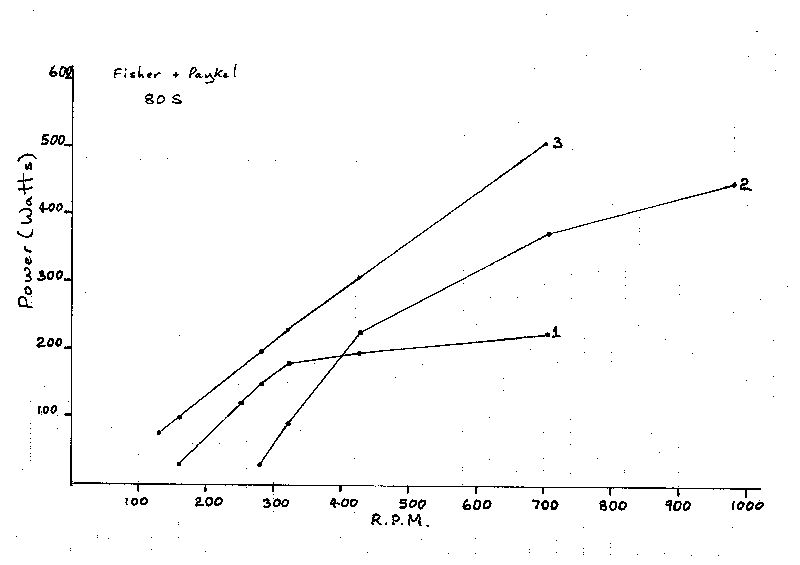This graph shows the results of much testing.

There's a larger & more readable version
here
Curves 1 & 2 are for the toroidal transformers.
Curve 3 is rectified to dc directly.
The F & P in question is wound with 0.8 mm wire.
The windings are left stock.
It is not de-cogged.
Curve 1:
F & P in star.
Toroidal Primaries in Delta.
Toroidal Secondaries individually rectified.
Toroidal ratio 120:18.
Curve 2:
F & P in star.
Toroidal Primaries in Star.
Toroidal Secondaries individually rectified.
Toroidal ratio 120:18.
Curve 3:
F & P in star below 400 rpm.
F & P in delta above 400 rpm.
3 phase rectifier feeding 2 x 470uF/400volt caps in series.
The load was 3 jug elements in series, giving 35, 70, 105 ohms.
At each rpm, 3 tests were done with 3 different loads.
The best result was used to graph the power.
A number of results shows the power peaking at the 70 ohm load,
and being less with 35 & 105 ohms. This is what we would expect
from maximum power transfer theorem.
This curve also does not allow for any inefficiencies in the
proposed dc-dc converter.
Conclusions:
The toroidal transformers achieve a result which is an acceptable
percentage of the theoretical maximum power recoverable, consistent
with being cheap, and simple to implement. Although the star/delta
switch adds some complexity. The savings in heavy cable, if the generator
is any appreciable distance from the batteries, should make this an
attractive proposition. The graphs show the power decreasing with
frequency, though operating at above 700 rpm is not normally a very
common occurrence. This is probably transformer losses.
The formerly proposed dc-dc converter, probably wouldn't achieve a return
commensurate with the effort required, except in perhaps 3 instances;
first: if the blade power at low rpm was less than the generator power,
causing the blades to not pick up speed easily.
second: using 2 F&P's on one shaft. The dc-dc converter vs 6 toroids, may
become an attractive proposition.
third: in an area with constant high winds, where operation above 500 rpm
is the norm.
Amanda